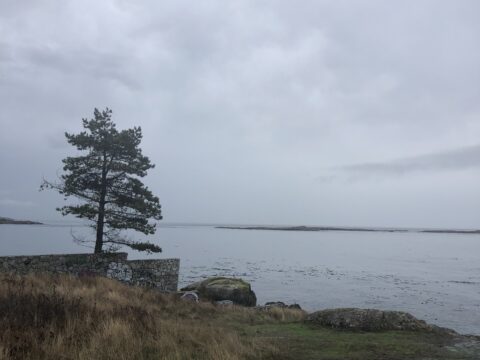
First off, what exactly is Trafalgar park. Well, Trafalgar is a local park located on 200 Block King George Terrace. It is 1,4 hectares of undeveloped and natural land just above the water. From here, you can have a wonderful view of Trial Island, the Salish Sea, and the Olympic Mountains. It is home to many native species of the area, such as wild roses, camas, miner's lettuce, and crab apple trees, all of which we will look at today.
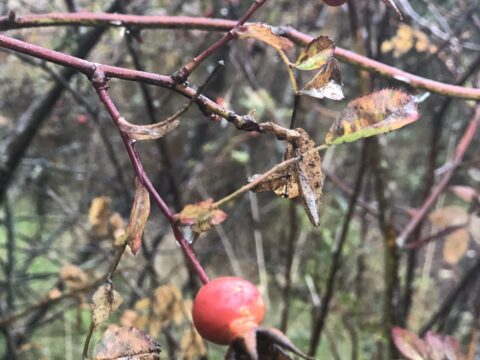
Wild roses are, in my opinion, one of the most beautiful native plants we have here at Trafalgar Park. It thrives in open areas, and blooms during the spring, or more accurately, from the end of May to the start of June, and the flowers can last for about two weeks after that point. Indigenous people of this area would traditionally use this plant for many things. For example, the fleshy part of the hip was eaten for its high amounts of vitamin C, the petals were made into tea, and the cambium (softer part of the roots) would be scraped of and made into an ointment, The wooden stems of the plant were also perfect for arrows. When I first went down to Trafalgar park, these bushes were all being suffocated by ivy and pushed out by gorse. Now, as you can see, these plants are flourishing and doing better than ever.
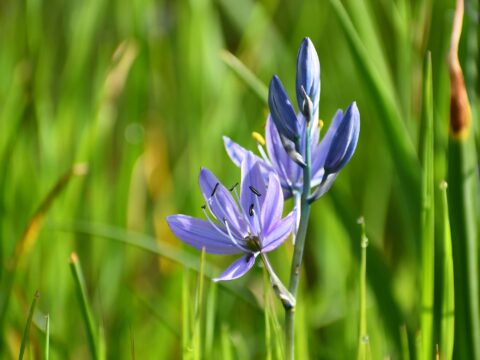
Camas, also known as common camas, or blue camas, are a flowering plant native to southern BC and all along the coast down to California. They are a perennial herb that bloom during May and June, and once bloomed they can grow up to 60 cm tall. Camas grow best in open meadows and grassy bluffs, and because of this they are often found in gary oak meadows. Trafalgar has all these things, making it a perfect habitat for this beautiful plant. Additionally, this plant thrives in areas that have been devastated by fires. It give them less competition as they can survive dry weather better than most plants.
Traditionally, camas bulbs would be steamed in pits, and then eaten either as a whole bulb, or dried and pounded into flour. When these bulbs are cooked, inulin (a healthy sugar) develops inside the bulb making it the perfect source of energy.
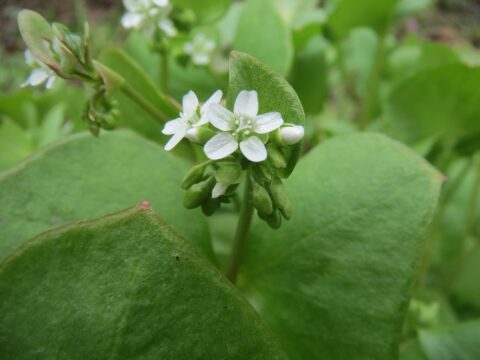
Miner's Lettuce, also called Winter Purslane and Spring Beauty, is a plant primarily found in southwestern British Columbia. It flowers during February all the way to June, and the buds grow at the end of the stem above a circle of leaves. When fully grown, they can be anywhere from 1 to 40 centimeters tall, and can grow up to 40 flowers on one plant. Their prime habitat is somewhere with even sun and shade, and do better in damp weather.
This plant is is edible at all points of its growing process, both its leaves and stems being just as delicious as the flowers. To this day people still search it out to put on their salads, but if we look back a bit, we can see that the indigenous people of this area used it as a medicine. It was used as an ointment for rheumatic pain, which is an extremely painful medical condition that can affect joints, bones, cartilage, tendons, ligaments and muscles, the juice was used to help people regain their appetite, and as a diuretic, which is used to help the body get rid of excess salt and water in the form of urine.
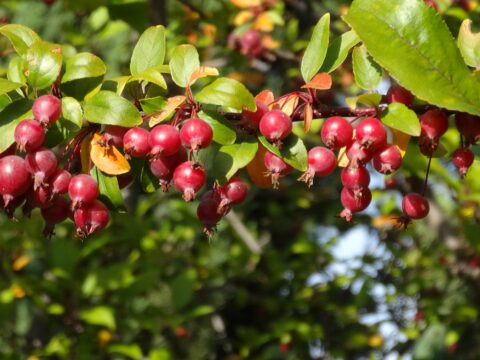
Pacific Crab Apples, or Oregon Crab Apples, grow all along the coast of British Columbia, including Vancouver Island (though they do not grow on Queen Charlotte). They bloom during the spring, starting out with blush pink flowers that are approximately 2 cm across that small fruit will grow from later on. The apples are relatively small, usually being somewhere from 2 - 5 cm in diameter, and are green and waxy to begin with, but over the course of two weeks will transform to a yellow, pink, and often purplish-red colour. They can range anywhere from 2 - 12 meters in height. Their preferred habitat is somewhere near large bodies of water or running streams, as they like moist soil, which means they do quite well in Trafalgar where the sea is just a few meters away and where the ground is more often than not soaked by rain.
Indigenous people of this are would use the hard wood of it’s trunk to make many things including tool handles, bows, sledge hammers, and many smaller objects like spoons and fishing hooks. The fruit would be harvested at the start of Autumn, and would either be eaten fresh, or stored away in boxes submerged in water to bring out the sweeter flavor of the fruit. The bark, combined with other plants would be made into various medicines used for stomach aches and skin problems.
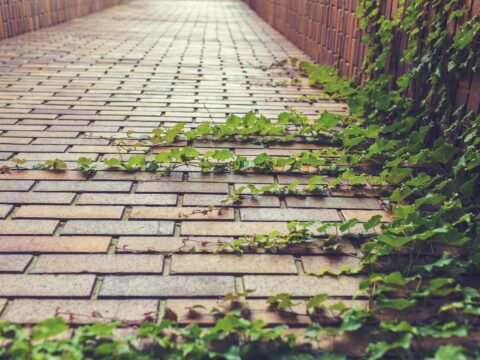
An invasive species is a species that is not native to its habitat. Usually these species are brought over from other places by humans, and are then spread through various means. Theses species are only labeled as invasive if they change or harm the ecosystem around them. One problem with invasive species is that they can spread and take over land that used to belong to the native spices of the area, and make it much harder for them to survive. As stated by the World Conservation Union, “Invasive species are the second most significant threat to biodiversity, after habitat loss.”
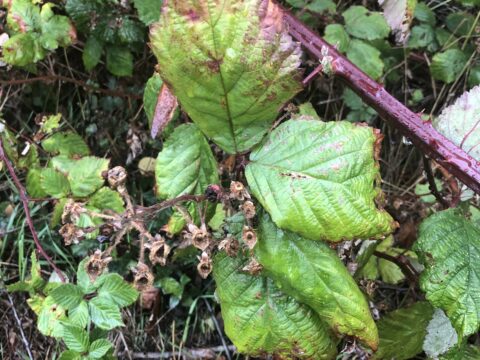
Himalayan Blackberries are quite a common invasive species here in BC, loved for their sweet fruit. The problem with this plant though, is that it crowds out all other low-growing flora in the environment, as well as creating such a dense wall of thickets that it limits the movement of animals living in the environment. We have been removing this species for years now, and have mostly succeeded, but since each thicket can produce up to 13,000 seeds per square meter, and Himalayan Blackberries can spread through root and stem fragments, we have to keep an eye out to make sure this problem doesn’t get out of hand once again.
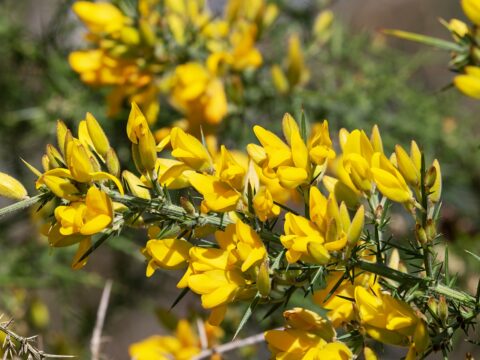
Gorse was one of the biggest problems down in trafalgar park just a few years ago. It was a spiky, unpleasant plant that thrives in sunny areas and in infertile grounds, like sand and rock. It can live up to 45 years and a single healthy plant can let out up to 18,000 seeds. Gorse is also an extremely competitive plant, and because of how fast it can reproduce and how long it lives, it is quite well known for pushing out native species. On top of this, large patches of gorse can produce this acidic substance that hinders the growth of the surrounding plants, and also lets out this oil that is highly flammable and can increase the risk of hotter-than-normal fires that could damage the native plants in the environment.
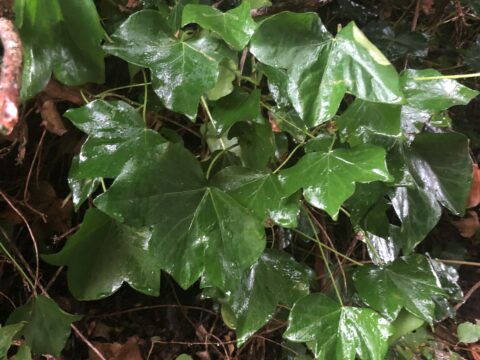
English Ivy is an evergreen vine that is considered one of the most smothering species out there. The thick ivy sheets overtake low lying plants and stop seeds from successfully planting in the soil. Quite often this plant will grow around the trunk of another plant, suffocating it and depriving it of sun until it dies, or becomes extremely weak. This plant needs very little light and water, and is fine with colder temperatures, so it can out live and overtake native plants even with very little to sustain it, and still grow rapidly.
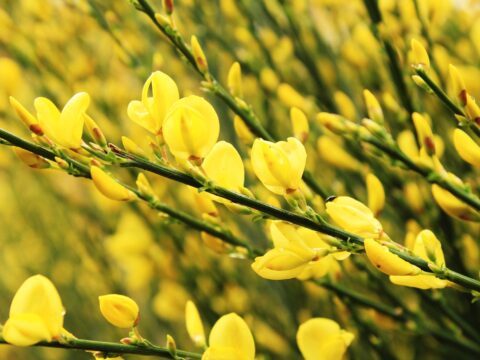
Scotch Broom easily invades sunny areas, which makes Trafalgar Park it’s perfect habitat because of its elevated height and general openness leads to it getting lots of that precious sunlight. It crowds out native plants that many local species depend on to survive and, just like Gorse, this plant can increase the intensity of fires, which can then harm native plants. Also, just like the Himalayan Blackberries, we need to keep an eye out for this species since its seeds can survive in soil for up to 30 years, and once it sprouts it can live for another 25.
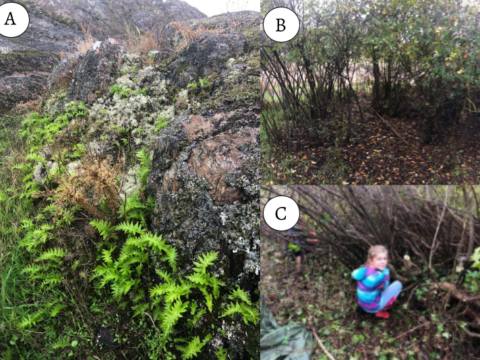
Over quite a few years, we have been working to make Trafalgar a more welcoming space for native species. When I first went back in 2016 the whole place was overgrown with the species we have gone over today, and I am proud to say that when I went back to vist this year, our efforts can be clearly seen in the way Trafalgars native species are thriving. For example, in picture A, you can see grass and ferns re-growing along the paths and rocks. This may seem like nothing, but when we first came here the whole area was overgrown with all the species we’ve looked at here that there was absolutely no chance for ferns, let alone grass, to be able to grow steadily. And if you compare and contrast pictures B and C, you can see how the area in picture B used to be completely overgrown with ivy and other invasive species, but has since been almost completely cleared.
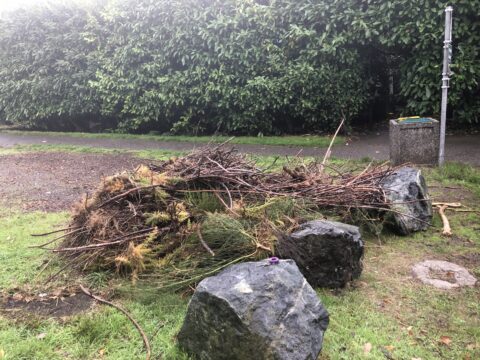
Even though progress is clear and in abundance, there is still work to be done. Himalayan blackberry vines are still threatening to overtake parts of the wooded area right along the coast once again, and ivy is still in abundance along the walkways. But, even as I visited to take the pictures seen on this page, there were piles of branches and brambles in a few spots along the walkway and a few tools covered by tarps. Even all these years after we have started this project, the students of Margaret Jenkins, and many others, are still battling hard against the ever persistent attack of the invasive species of Trafalgar Park.












